Lyndsey Haraguchi-Nakayama- Fifth Generation Taro Farmer
The soothing babble of water trickling into a kalo loi (taro patch) is broken by the honk of a nene goose somewhere in the distance. The cooling, early-morning mist has retreated to the Hanalei Mountains. Midday approaches and its rising heat slows everything down. Except the sweat dripping down Lyndsey Haraguchi-Nakayama’s brow. She’s been working non-stop since before sun-up on her 55-acre family farm.
The black mud is midway up Lyndsey’s knee-high boots as she rocks heel to toe to loosen the suction so she can step forward in the loi between green, heart-shaped kalo leaves. She’s harvesting mature kalo ahead of today’s tour – a busload of local school children learning about the importance of agriculture with a hands-on experience in the fields. She calls her dad, Rodney, to help her finish up, because she’s got to deliver a load of taro burgers, taro hummus and kulolo (a coconut-taro dessert) to her lunchwagon just down the road in Hanalei Town.
There’s rarely a break and never a day off in the life of a taro farmer, especially one as entrepreneurially driven as Lyndsey. And she wouldn’t have it any other way. For her, each day is an opportunity to contribute to the legacy handed down to her from her great-great-grandparents, who worked these very same fields.
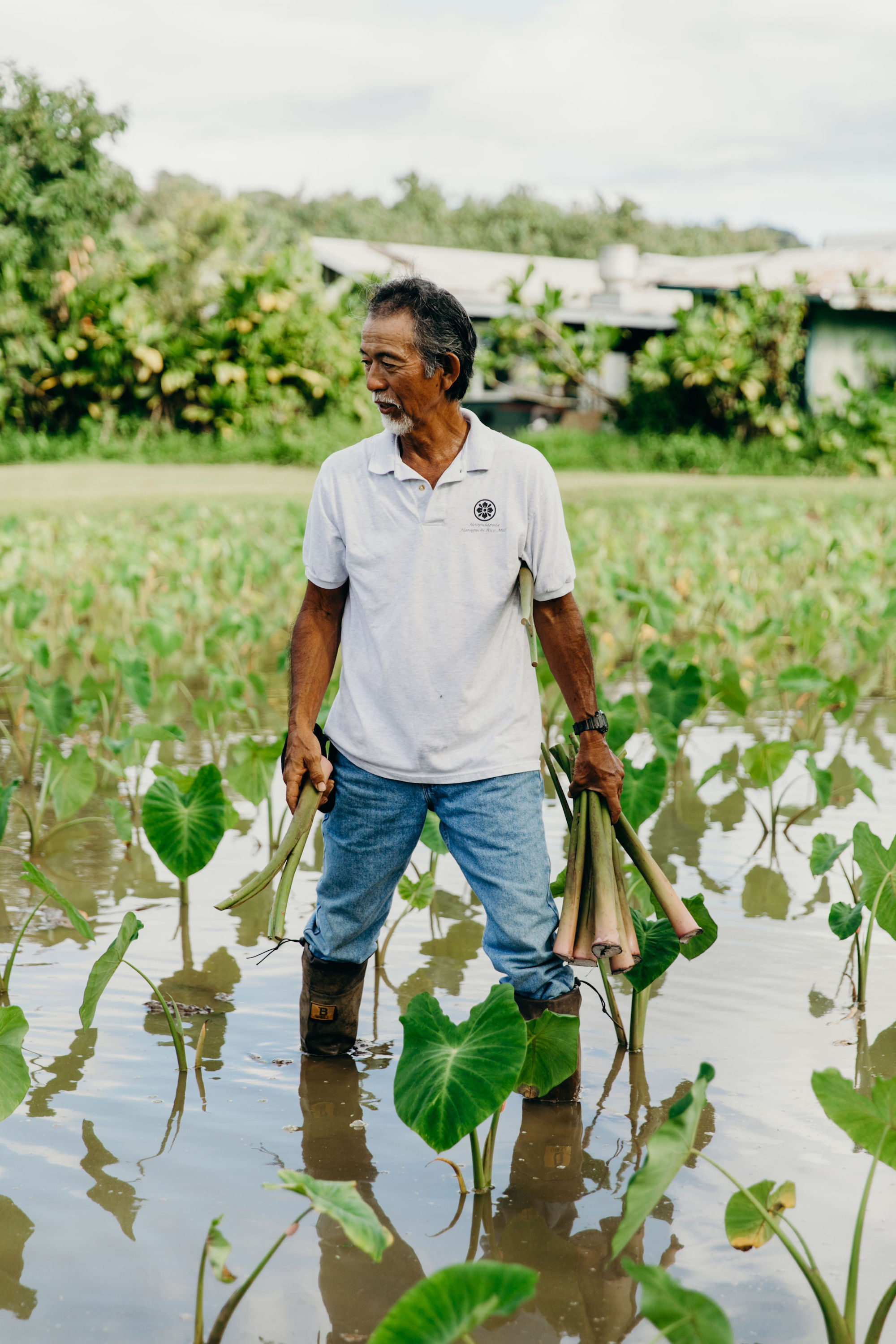
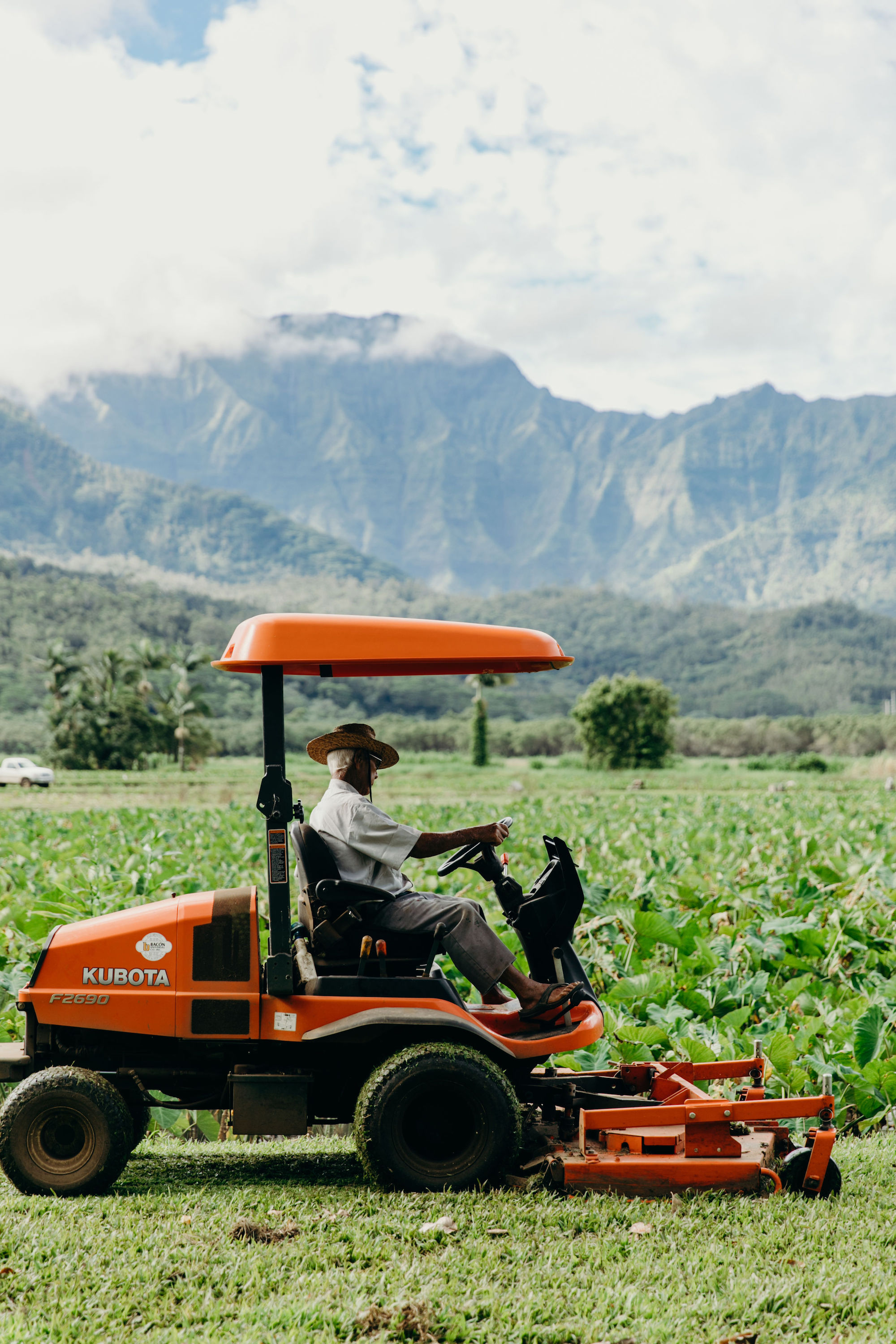
Where do you get the work ethic to farm every single day?
For our ohana, our family, it’s something that we grew up doing. It’s just ingrained in our nature. My grandfather is 96, and he still comes and works on the farm every day. Just to see him working in the fields across from me, you know, gives me a sense of encouragement. Like, “Hey, there’s Grandpa. Oh, he’s going! I better get going.” You know?
So it’s that sense of encouragement, inspiration, and definitely camaraderie and that family work ethic, working together on the farm. I think when you work every day doing something you love, trying to persevere and preserve something for generations to come, it might not feel like a lot of work.
And taro isn’t an easy plant to grow, is it?
It’s very much a labor-intensive crop. There is no machine invented to plant, harvest, and weed taro in a loi wetland taro patch. We do it all by hand. You’re bending over for hours at a time. I always joke that the chiropractors here on Kauai know our family quite well.
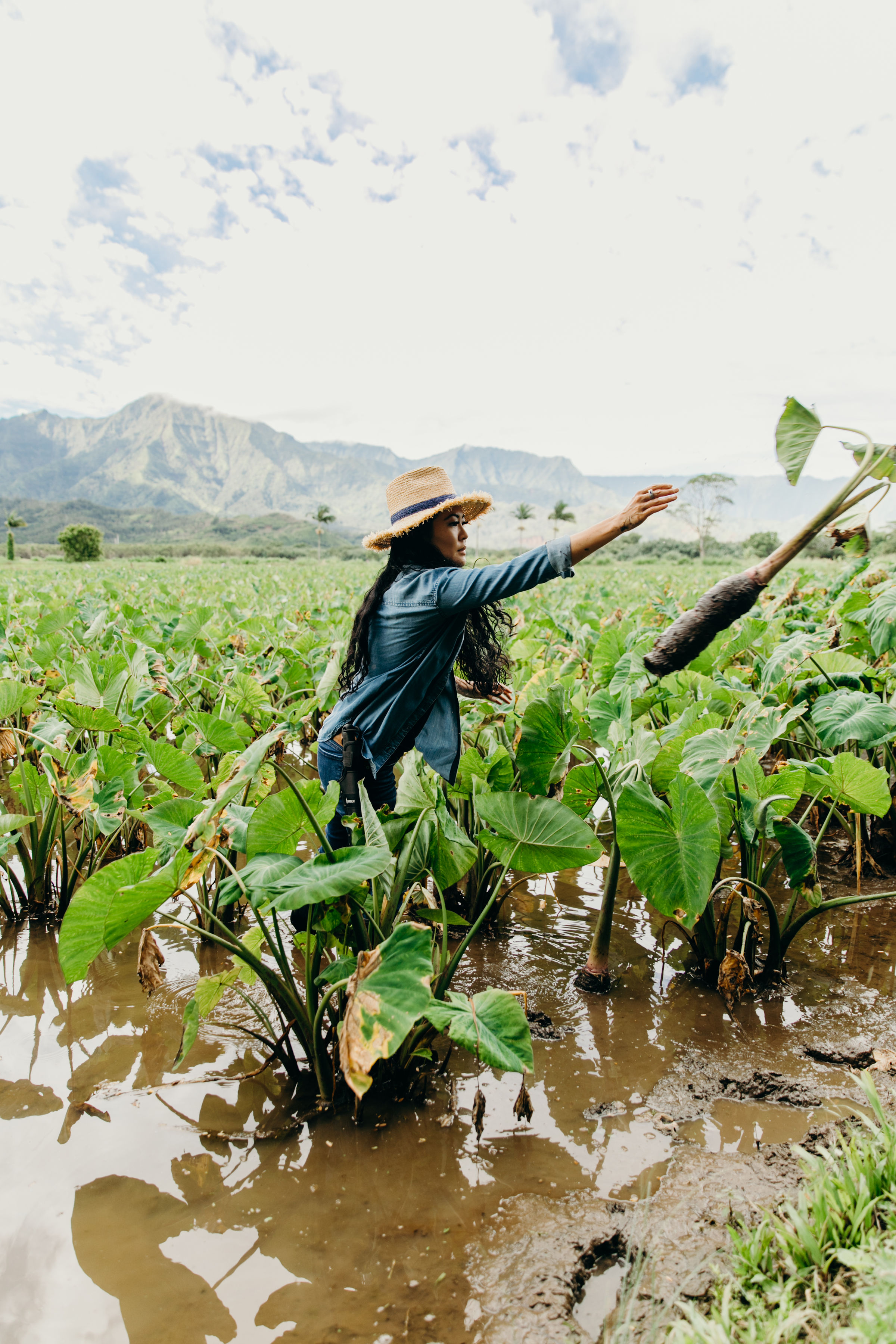
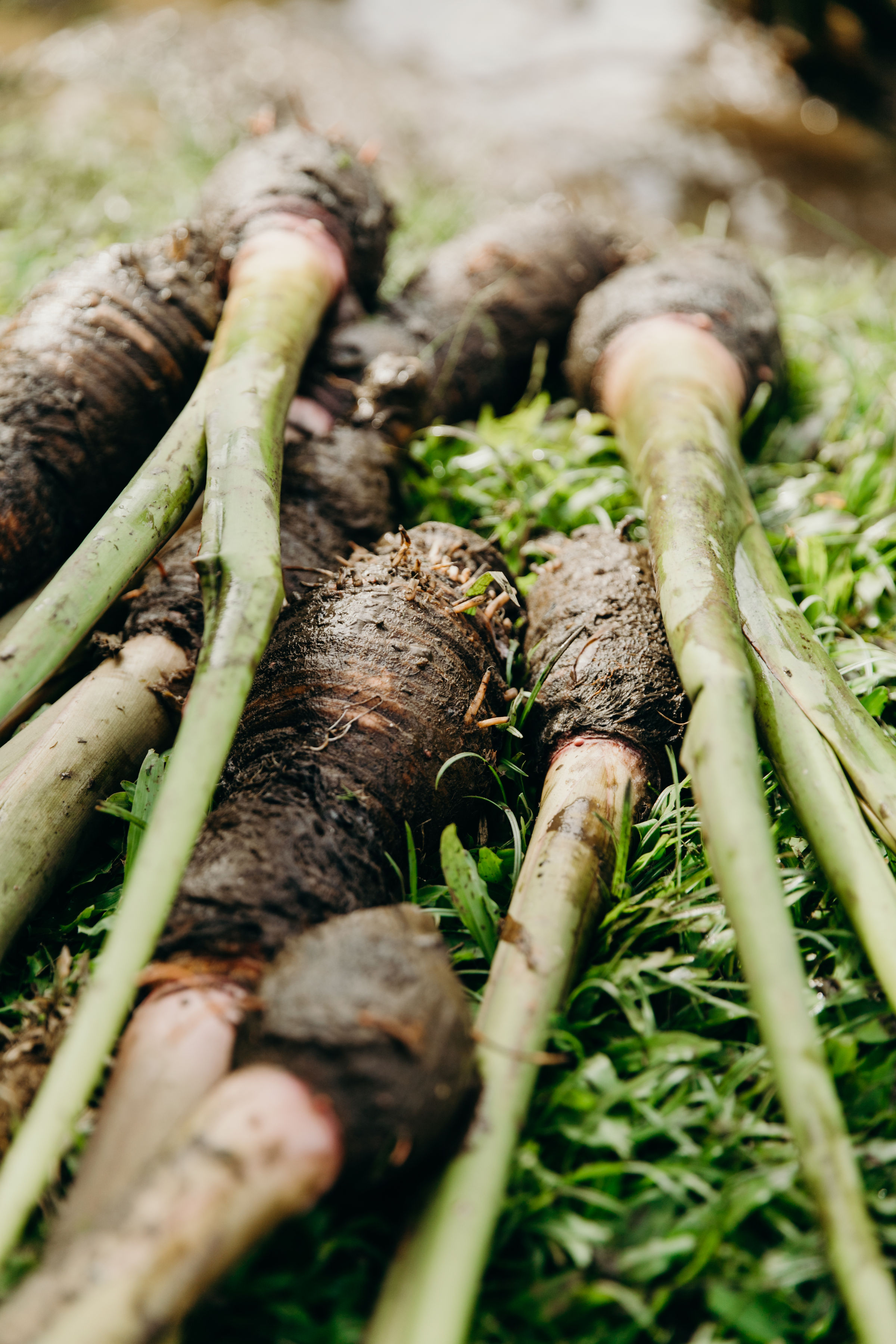
You also offer a museum, a food truck and ecotours for visitors. Why do you do all that?
My mother is a teacher and she realized that there is nowhere else in the entire state of Hawaii where children can come and learn about the agricultural history, about what generations have sacrificed, and how hard they worked. She started the museum 36 years ago to instill that type of agriculture and environmental awareness education in children, where they can see it and experience it firsthand.
It’s called the Hoopulapula Haraguchi Rice Mill agrarian museum. Hoopulapula is its mission. In Hawaiian that means, “to plant the seedlings of.” Whether it’s to plant the seedlings of rice or the seedlings of taro, and especially seeds of education and knowledge for future generations.
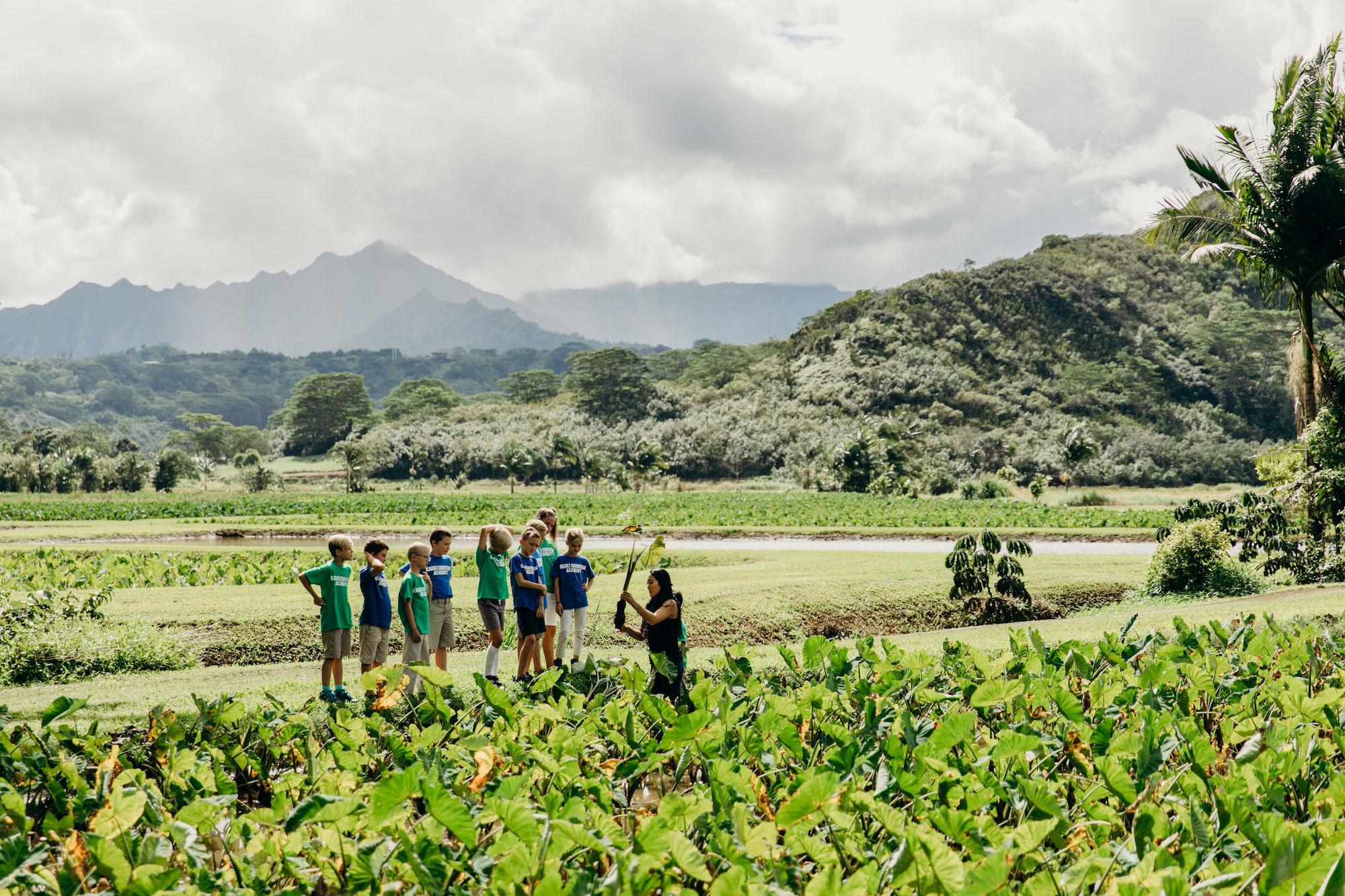
“To me it’s important that people understand how hard farmers work and what they go through, and respect the farm areas and the endangered bird nesting areas, especially, by not trespassing.”
What do visitors learn from Hanalei Taro and Juice Company?
To me, it’s important that people understand how hard farmers work and what they go through, and respect the farm areas and the endangered bird nesting areas, especially, by not trespassing.
The farm is also a U.S. Fish and Wildlife refuge. It’s home to about five endangered native Hawaiian water bird species, and they nest here throughout the years. Our priority is to be able to not only provide food for the community, but also keep endangered birds safe as well. That’s why it’s important for people when they visit to learn that they have to be careful where they walk. They can come on a farm ecotour, but they can’t trespass on our land because when they do, it’ll put endangered bird nesting areas at risk. Not to mention the health of our crops.
I also try to convey to tourists, I kinda educate them, because a lot of people have a negative connotation of poi if they didn’t grow up eating it. There are so many other forms of taro. We enjoy sharing family dishes that we’ve been making for generations, like taro hummus, taro smoothies, taro burgers. Try the kulolo! Give it to them in a healthy way and they’re like, “Oh taro is actually very nutritious!” They walk away with an appreciation of taro, culture here in Hawaii, and especially how hard farmers work to get it to their table. When they grasp that concept, I know I got through to them.
